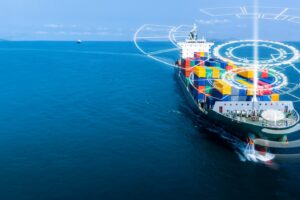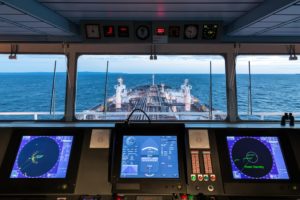Space for Maritime Task Force Launched

The “Space for Maritime Task Force” was recently launched by the European Space Agency (ESA) together with maritime stakeholders at the Italian Coast Guard Headquarters in Rome. The initiative acts on ESA’s vision to boost digital and green solutions, reducing emissions and enabling sustainable innovation.
In recent years, ESA Space Solutions has been cooperating with key stakeholders in the maritime sector via the Business Applications and Space Solutions (BASS) programme. These include a wide range of user communities and classes such as fisheries, coast guards, port authorities, military bodies, shipping companies, commercial operators, and international, national and European institutions. Through this cooperation, ESA has built strategic partnerships and supported several initiatives addressing domains such as maritime sustainability, ship tracking via satellite-based automatic identification systems (AIS), smart routing, autonomous vessels, water quality monitoring, the reduction of marine pollution and the green transition of ports’ eco-systems.
The Italian General Command of the Port Authority Corps - Coast Guard has, for some months, been working on a collaboration with ESA to foresee and enhance the use of space applications aimed at promoting sustainable innovation and transport in the maritime ecosystem. This collaboration has resulted in the creation of a standing committee, called the Space for Maritime Task Force (SMTF).
The Task Force aims to contribute to sustainability and maritime safety by increasing the use of innovative integrated solutions that exploit digital and space technologies, such as communications, navigation, and earth observation. This initiative will leverage active involvement of national institutions, Industry and research entities in the digital transformation of port and maritime services (e-Navigation), with a view to enhancing the sustainability of maritime transport. It will foster the innovative use of space technologies for supporting the shipping sector, for example in its transition to uncrewed shipping, as well as the implementation of a safe integration of uncrewed vessels within maritime transport provision, the monitoring of coastal areas and infrastructures, and maritime surveillance activity (in the domains of safety, security, fishing and the environment). The work will be divided into sub-topics of interest, which for the moment include "maritime sustainability", "green and smart ports" and "safety at sea and maritime security".
The results from the Task Force will be presented to international (International Maritime Organization - IMO) and European bodies, in order to contribute to the development and standardisation of requirements and innovative technologies aimed at improving maritime services. This will allow sustainable economic growth for all players involved. Rita Rinaldo, Head of the Projects & Studies Implementation Division at ESA Space Solutions commented “Collaboration with maritime stakeholders is key for ESA to support innovative solutions that exploit digital and space technologies, and to enable European space and downstream companies to contribute to sustainability and maritime safety.”
Partners in the Task Force include: the General Command of the Port Authority Corps - Coast Guard; European Space Agency (ESA); Italian Space Agency (ASI); National Inter-University Consortium for Telecommunications (CNIT); and the Directorate General for the Supervision of Port System Authorities, Maritime Transport and Inland Waterways.


